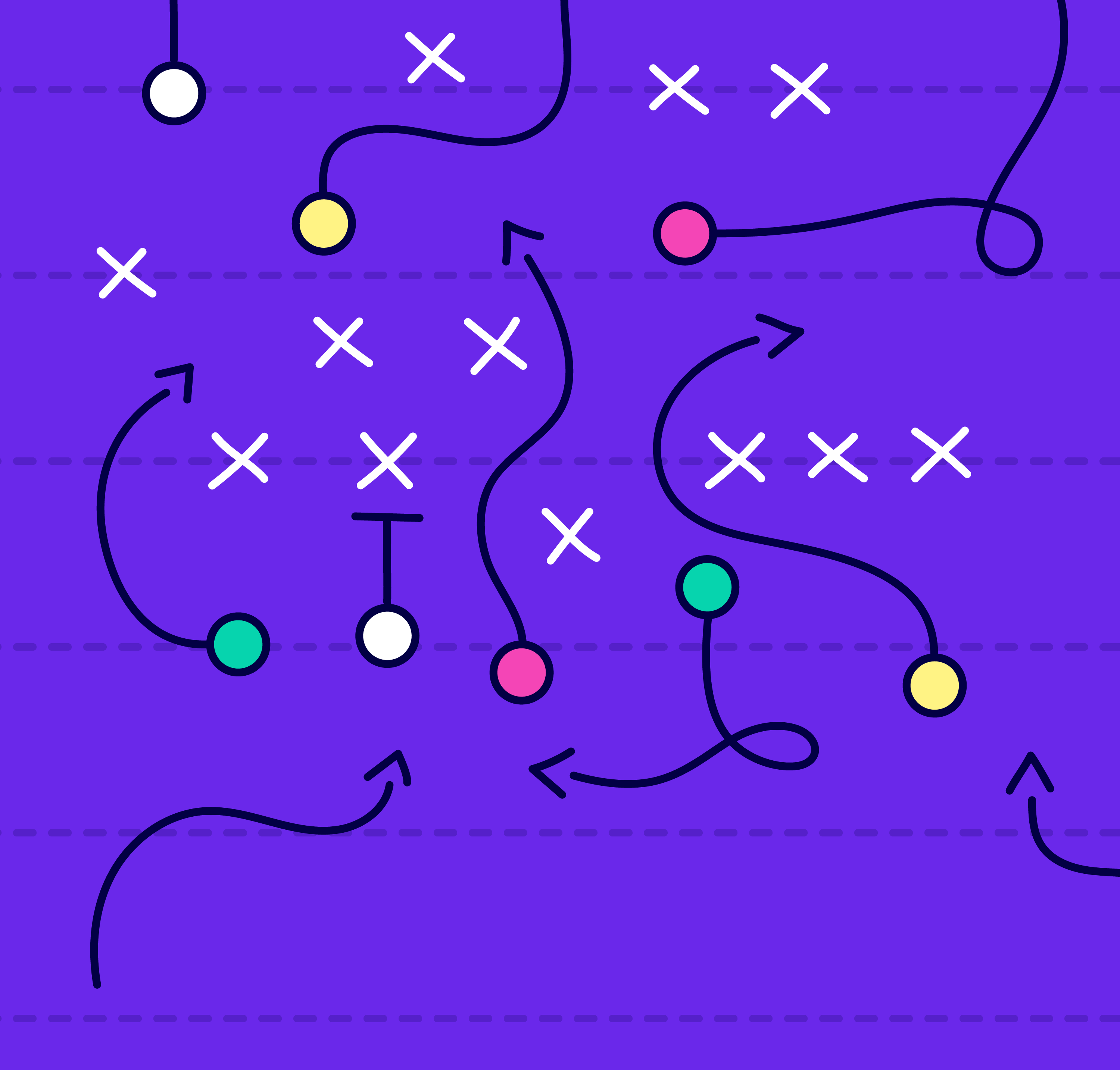
Articles
How To Build Your Company’s Diversity & Inclusion Policy
June 16, 2020

I am a queer 🏳️🌈, Mexican, Native American, and caucasian woman. And I just built Trainual’s official Diversity & Inclusion policy.
Admittedly, the fact that I represent several underrepresented communities did not make this task any easier. The stakes were extraordinarily high. And with today's ongoing fight for equality here in the US, failure was not an option!
I spent 3 months crafting the policy, knowing full-well that the final product would determine the security of myself and every other team member - now and in the future.
Part of my writing process was reflecting on the discrimination I experienced at previous companies. I thought about what policies and procedures could have been in place to protect me. But I also reflected on the privilege my light skin and fortunate upbringing has also brought.
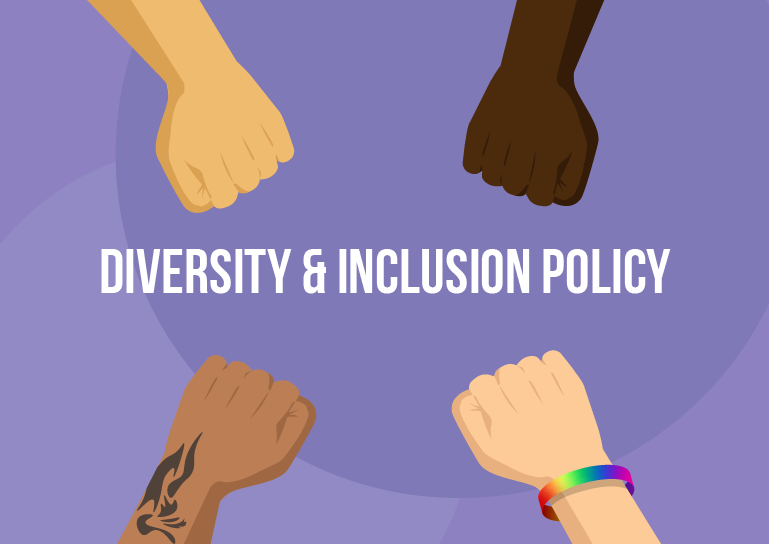
Trainual's standard for Diversity and Inclusion is the product of all these experiences. Create your free Trainual account or sign in to get your new Diversity & Inclusion policy.
Or, if you're looking to write your company's policy from scratch, here’s how I did it and what it needs to include:
Step 1: Start with how the final policy should sound and feel
This sounds counter-intuitive. But honestly, I don’t know how else to start communicating something that would define the safety and security of my fellow team members.
I mean - should it be succinct? Should it give details and examples? Should it err on the side of professionalism, or keep things casual?
Although it would be easier to shelter behind professionalism (especially when with such high stakes), we write our internal communications the same way we talk to the world. Clearly and casually.
And that was exactly how I would write our Diversity & Inclusion policy as well.
I wanted to engage our team and make them feel like they were part of the conversation (as opposed to being forced through policy reviews).
This ended up being the best way to get started. It allowed me to write about what was really important to me as if I were discussing it with a friend - and that’s kind of the point.
Keep in mind that a conversational tone might not be the right approach for your team, and that’s okay! What’s important is that the policy’s tone reflects your brand while keeping your employees engaged and part of the conversation. After all, this policy is for them!
Step 2: Define both diversity and inclusion
Not everyone knows what diversity and inclusion are, or defines them in the same way.
You can’t move forward with the training or expect that your policy will be upheld if everyone is operating under different definitions of what diversity and inclusion are.
After a tremendous amount of research on the matter (you would not believe how many books and articles I read about this), here is how we defined them at Trainual:
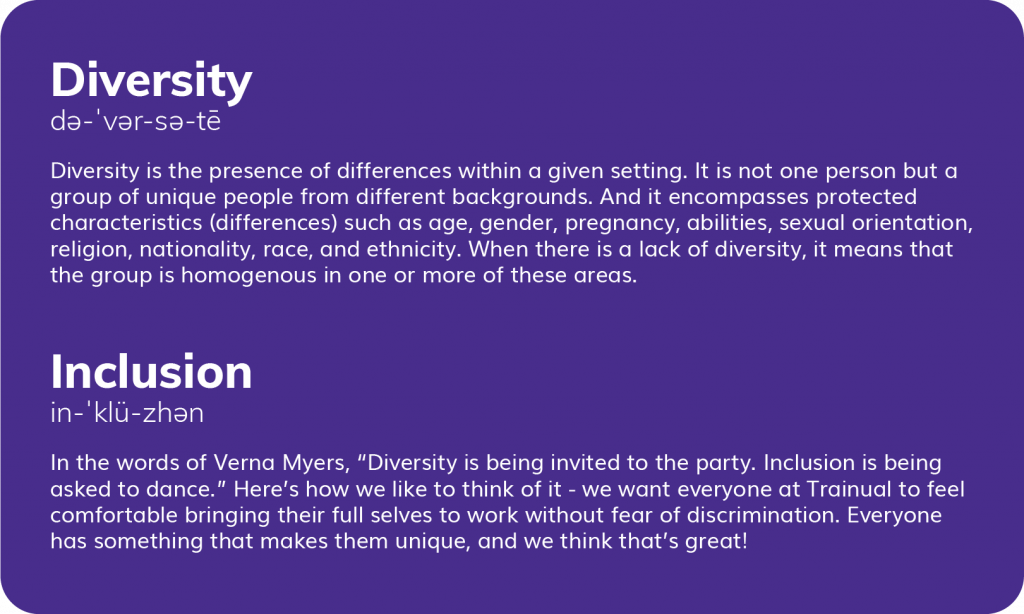
Although I could have easily talked about these for many, many more paragraphs, it was more important to keep these brief, understandable, and casual. That way, everyone who reads them knows what’s happening and feels like they are a part of the conversation.
Step 3: Determine what the policy needs to say
The main question driving me was this: What would I need to know to be able to feel safe and secure at work?
I made a list.
- The things that make me different were accepted (at the bare minimum) by my team.
- I can talk about being queer, a woman, Mexican American, Native American, and white without feeling like any of these topics are inherently wrong. (If I can't talk about them, then I can't bring my full self to work.)
- When I talk about my differences with coworkers, I will be met with a respectful conversation.
- My company will stand behind me if I am being harassed or discriminated against because of the things that make me different.
- If hate speech, inappropriate jokes, or hurtful comments are made (even if not directed toward me), I can say something. And that when I do, I will be heard and protected.
The things on this list may seem like a no brainer. But they are all needs that have not always been met in professional settings.
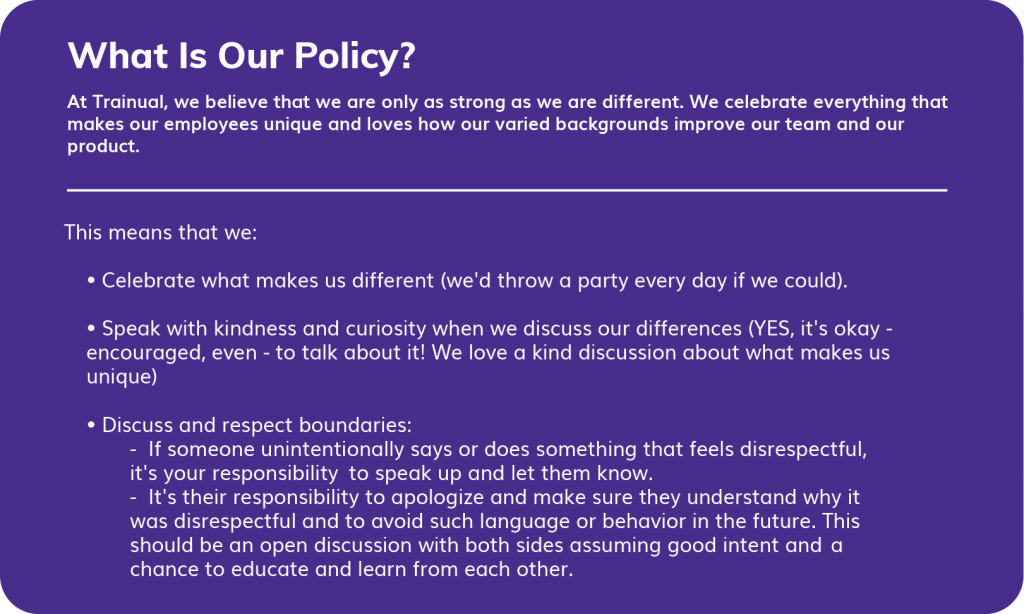
When crafting your own Diversity & Inclusion policy, ask yourself the same question. What do you need to feel safe bringing your full self to work?
If you do not feel like you have adequate insight into these issues, talk to employees who will be directly affected by the standards of this policy. Listen carefully to their answers. And make sure that their concerns are addressed by what you create.
Why it’s important to talk about differences
It might seem like it’s inviting a lawsuit to encourage your team to talk about matters of minority and underrepresentation, but it’s critical to inclusion.
But imagine this. You are a man. A good friend of yours invites you to a party. But you are running a bit behind, so when you arrive, everyone else is already there. You open the door to find a room full of only women, and no one says a word. It almost feels like you walked into the wrong bathroom, right?
Now imagine the same scenario. But this time, as soon as you open the door, someone says: “Come on in! I know you’re the only dude. But we’re so glad you could make it.”
How much better would that experience be? You would have known, right from the start, that it's okay that you're different. You were still supposed to be there.
This is the feeling that people who are the “only” in a company experience every day. And it can be really off-putting if your policies don't welcome these differences into your culture.
Step 4: Identify which behaviors you will not tolerate
From Day 1, we knew Trainual wouldn’t tolerate discrimination or harassment. But I needed to define exactly what those things looked like.
When writing a policy on a sensitive subject like Diversity and Inclusion, you don’t want to assume that everyone knows which behaviors are wrong and which are right. This leaves a grey area.
But there is also no need to write a fully comprehensive list either. With so many actions and behaviors constituting discrimination and harassment, there is no way to account for them all.
Instead, you should give explicit examples of behaviors that your company will not tolerate under any circumstances. That way, every employee has a clear idea of what actions are unacceptable.
If you need some inspiration, here are the examples we provide our team:
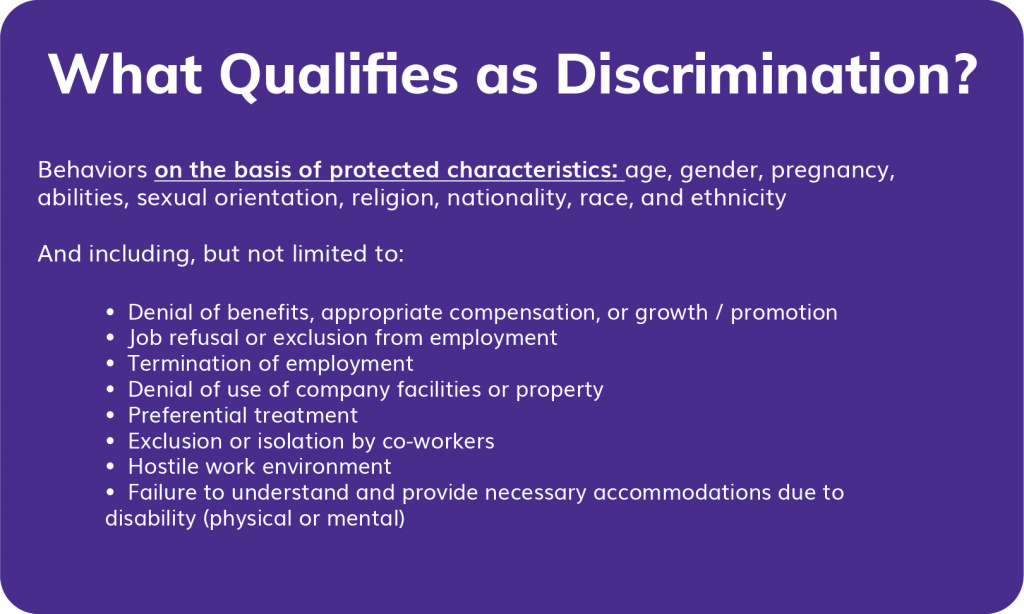
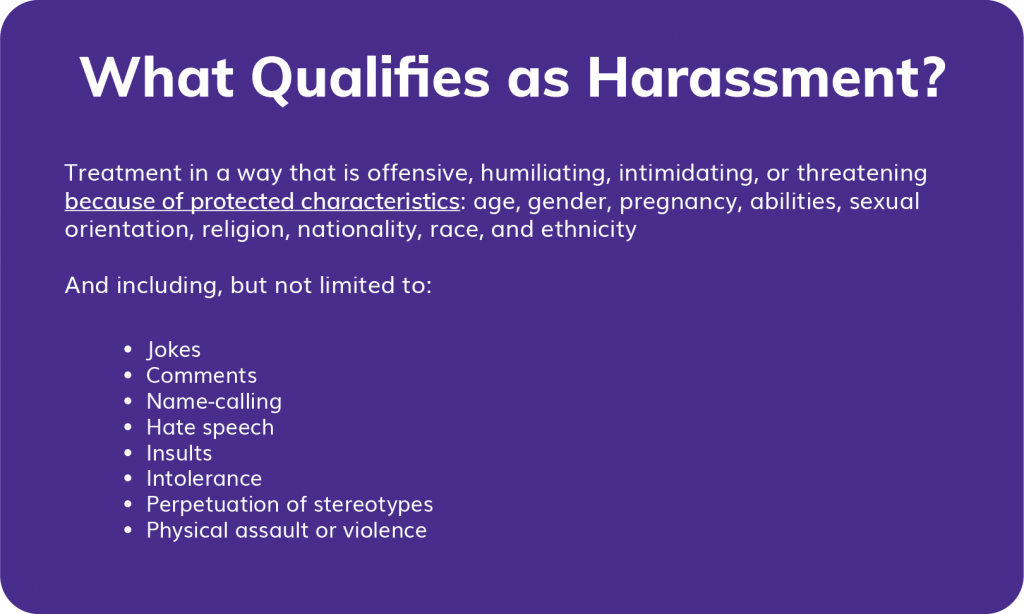
Step 5: Explain the course of action for failure to abide
Setting a standard and maintaining it is the only way this policy will foster a truly inclusive and safe environment for all employees. That means, if any employee acts in a discriminatory way, you take action.
If you fail to do so, you will end up losing the trust of your team and (in all likelihood) valued team members.
In the policy, this standard just needs to be a simple and clear statement that leaves no room for interpretation. Ours is:
“We will take action against any employee found guilty of discrimination or harassment based on protected characteristics (such as age, gender, pregnancy, abilities, sexual orientation, religion, nationality, race, and ethnicity), up to and including termination of employment. We have zero-tolerance for discrimination and harassment at Trainual.”
With this statement, we ensure that anyone who acts in a discriminatory or harassing way will meet further action, and can lose their position.
And while these words are powerful, you need to practice them moving forward every time the policy is violated, regardless of the position of the employee. This includes holding higher-level employees to the same standards and instituting the same disciplinary actions, if necessary - no exceptions.
Whether you decide to use the templated version or create your own, every company needs an instituted Diversity & Inclusion policy. There are communities still fighting battles for equality to this day. And you are responsible for making sure that they can take off their armor when they get to work. This policy is the first step.
Similar Blog Posts





